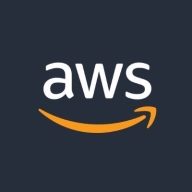Amazon Web Services (AWS) is an adopted cloud platform that offers more than 200 fully featured services from data centers located across the globe. This is a scalable, low-cost infrastructure platform in the cloud that is utilized by thousands of businesses of different sizes around the world. The product offers a wide variety of solutions for its customers, which allows them to launch applications regardless of their industry.
The most common use cases for AWS are:
-
Application hosting: Clients can take advantage of on-demand infrastructure to power their applications. The product supports multiple types of apps, varying from hosted internal applications to software as a service (SaaS) offerings.
-
Websites: With AWS, clients can satisfy their web hosting needs through a scalable platform for their websites.
-
Backup and storage: AWS offers reliable data storage services, which allow clients to store their data and build dependable backups for all of their valuable information.
-
Enterprise IT: The product allows companies to host internal- or external-facing IT applications in a highly secure environment.
-
Content delivery: Users who want to distribute content to end users worldwide can do so quickly and easily through the high data transfer speeds of this solution.
-
Databases: AWS offers a variety of database solutions, which include hosted enterprise database software as well as non-relational database solutions.
Amazon AWS supports a global cloud infrastructure with AWS Region and Availability Zone models, which contribute to the high availability of enterprise applications running on the solution. Amazon AWS has an extensive array of products that serve different purposes, including:
- Analytics
- Application integration
- Blockchain
- Business applications
- Cloud financial management
- Compute
- Contact center
- Containers
- Database
- Developer tools
- End-user computing
- Front-end web and mobile
- Games
- Internet of Things (IoT)
- Machine learning
- Management and governance
- Quantum technologies
- Robotics
- Satellite
- Security, identity and compliance, and others
The products and services that Amazon AWS delivers to these sectors provide a large computing capacity which is quicker and cheaper compared to building a physical server farm. Among the most popular services are Amazon Elastic Compute Cloud, also known as "EC2," and Amazon Simple Storage Service, also known as "S3."
Amazon AWS Features
The wide array of products that Amazon AWS offers consist of different functions that utilize cloud computing across different sectors. The features of this solution can be categorized in the following ways:
-
Data and relationship management: With Amazon AWS, companies can manage multiple hierarchies of directory data, they can define attributes for objects and relationships, set custom inheritance rules for directories, and create multiple schemas.
-
Schema management: This group of features allows users to extend their directory schema according to their needs. They can extend it through multiple applications that share a single directory while avoiding duplication of data.
-
Fully managed infrastructure: This feature decreases time and costs for administrative tasks for companies regarding scaling infrastructure and managing servers.
-
Searching feature: The Cloud Directory feature of AWS offers built-in search capabilities which can cover sets of highly connected data and eliminate the need of creating nested queries.
-
Built-in data encryption: Users can benefit from high levels of protection of their data with AWS's products. The data in the cloud is automatically encrypted at rest and in transit through 256-bit encryption keys, managed by AWS Key Management Service (KMS).
-
Object policies: This feature allows Amazon AWS users to organize objects in different hierarchies by providing a framework for applications to evaluate policy assignments.
Amazon AWS Benefits
This product delivers various benefits across all industries that utilize its services. The greatest advantages of using Amazon AWS include:
- High product functionality is supported by machine learning, artificial intelligence (AI), IoT, data lakes, and analytics.
- The solution has a high level of security, which is backed by a deep set ofmore than 100 cloud security tools.
- Amazon AWS has an easy-to-use interface that makes it possible for clients to host applications.
- The product is very flexible in terms of which operating system, programming language, web app platform, and database clients can use.
- AWS is a scalable and highly secure global computing infrastructure, supported by the reliability of Amazon.com.
- Clients can utilize the Auto Scaling and Elastic Load Balancing tools to personally scale up or down applications, depending on their demand.
- Users can choose from an array of payment options, including paying for only the services they need, as well as a free trial to select the ones most useful for them.
Reviews from Real Users
Greg G., a chief executive officer at a tech services company, ranks Amazon AWS highly, as he states that the solution is flexible, scales well, and offers good stability.
A technology manager technology at a computer software company values Amazon AWS because it is extremely cost-efficient, easy to upgrade and expand storage with greatly improved interfaces.
CloudSphere is an intelligent cloud management platform that enables organizations to plan, optimize, secure, and scale their cloud adoption. The platform has three solutions to help organizations manage dynamic, multi-cloud environments, including cloud migration planning, cloud cost management, and cloud security posture management. By using application intelligence (AI), the platform is able to discover and collect all of the data points that collectively define an application across on-premises, hybrid, and cloud environments. Because the solution is very scalable, it can accommodate companies of all sizes.
The CloudSphere solution is ideal for:
- SMBs
- Enterprises
- Government
- ISVs
- Managed service providers
CloudSphere Product Highlights
- CloudSphere has a unique data science approach to hybrid and multi-cloud cyber asset management that offers the only solution to automate the discovery and creation of a top-down, application-level graphical view of your organization’s cyber assets.
- With its continuous application graphing, CloudSphere can save countless hours and provides the visibility to optimize your IT environment without triggering unforeseen business risks or disrupting other applications.
- The platform’s visualization capabilities accelerate cloud migration, transformation, and modernization initiatives with real-time insights and optimization recommendations.
- CloudSphere’s security posture monitoring minimizes cyber security exposure and reduces risk from misconfigurations.
- Automating compliance monitoring for corporate policies and key industry standards makes reporting extremely easy. The solution’s context-aware policy engine builds on the platform’s continuous visibility capabilities to display real-time compliance status and reports.
CloudSphere Features
CloudSphere has many valuable key features. Some of the most useful ones include:
- Access controls/permissions
- Billing
- Provisioning
- Capacity analytics
- Cost management
- Demand monitoring
- Multi-cloud management
- Performance analysis
- Service level agreement (SLA) management
- Workflow approval
CloudSphere Benefits
There are many benefits to implementing CloudSphere. Some of the biggest advantages the solution offers include:
-
Reduce migration risk: With CloudSphere, you can migrate complex applications with agentless discovery of application interdependencies while optimizing for both cost and performance.
-
Manage your budget more efficiently: CloudSphere generates reports and provides alerts for cloud spend by group, department, project, or individual so you can keep your organization’s budgets on track.
-
Access controls: With CloudSphere’s visual maps, identity and access data is displayed to show who has access to key cloud resources.
-
Minimize attacks: The solution helps your organization establish better security and minimize cloud attack surface and your exposure window by using customizable risk scoring, remediation recommendations, and integration with 3rd-party reporting tools.
-
Ensure compliance: CloudSphere allows you to control cloud security risks and ensure compliance in complex hybrid and multi-cloud deployments with real-time visibility, continuous configuration monitoring, and user controlled auto remediation capabilities.
-
Comprehensive end-to-end view of your applications: CloudSphere gives you a comprehensive end-to-end view of your applications, regardless of your apps’ complexity, in order to provide optimization and accuracy throughout the migration process.
-
Policy-driven controls for cloud spending: The CloudSphere platform provides policy-driven controls for cloud spending along with visibility so you can properly budget for cloud usage and tie cloud infrastructure spending to business outcomes. The solution enables you to set and track budgets, configure alerts, allows users to take corrective action from trend reports, and helps you optimize cloud spending with continuous resource monitoring and rightsizing suggestions.



